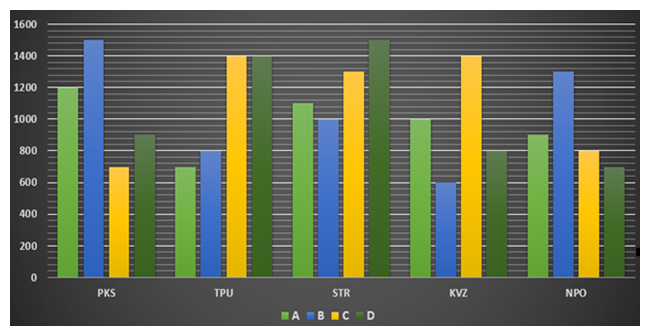Dear Readers, SBI is conducting Online preliminary Examination for the recruitment of Clerical Cadre. preliminary Examination of SBI Clerk was scheduled from June/July 2018. To enrich your preparation here we have providing new series of Data Interpretation – Quantitative Aptitude Questions. Candidates those who are appearing in SBI Clerk Prelims and IDBI Executive Exams can practice these Quantitative Aptitude average questions daily and make your preparation effective.
[WpProQuiz 1559]
Click “Start Quiz” to attend these Questions and view Solutions
Daily Practice Test Schedule | Good Luck
| Topic | Daily Publishing Time |
| Daily News Papers & Editorials | 8.00 AM |
| Current Affairs Quiz | 9.00 AM |
| Logical Reasoning | 10.00 AM |
| Quantitative Aptitude “20-20” | 11.00 AM |
| Vocabulary (Based on The Hindu) | 12.00 PM |
| Static GK Quiz | 1.00 PM |
| English Language “20-20” | 2.00 PM |
| Banking Awareness Quiz | 3.00 PM |
| Reasoning Puzzles & Seating | 4.00 PM |
| Daily Current Affairs Updates | 5.00 PM |
| Data Interpretation / Application Sums (Topic Wise) | 6.00 PM |
| Reasoning Ability “20-20” | 7.00 PM |
| English Language (New Pattern Questions) | 8.00 PM |
| General / Financial Awareness Quiz | 9.00 PM |
Directions (Q. 1 – 5): Study the following information carefully and answer the questions given below:
The following graph represents number of four different products manufactured by five different companies in 2015.


a) 6.85% less
b) 7.54% less
c) 6.85% more
d) 7.54% more
e) none of these
a) 56:65
b) 45:54
c) 65:56
d) 54:45
e) None of these
a) 1200
b) 1800
c) 2400
d) 2800
e) none of these
a) 5490
b) 4950
c) 5940
d) 4590
e) None of these
a) 108.67%
b) 135.52%
c) 112.45%
d) 149.57%
e) None of these
Direction (Q. 6 – 10) Read the following information carefully and answers the following questions. The table below shows number of pens produced and sold by three different companies and the given years:
| Year | Company M | Company N | Company O | |||
| Production
| Sales | Production | Sales | Production | Sales | |
| 2006 | 450 | 60% | 20% | 240 | ||
| 2007 | 600 | 43% | 500 | 15% | ||
| 2008 | 20% | 40% | 180 | |||
| 2009 | 480 | 15% | 450 | 40% | ||
| 2010 | 680 | 30% | 600 | |||
a) 200
b) 400
c) 855
d) 305
e) 350
a) 18
b) 12
c) 25
d) 30
e) 35
a) 200
b) 250
c) 480
d) 300
e) 350
a) 200
b) 400
c) 100
d) 660
e) 350
a) 100 %
b) 80 %
c) 75 %
d) 65 %
e) 55 %
Answers:
Directions (Q. 1 – 5):
Total number of product A manufactured by all the companies in 2015
= 1200 + 700 + 1100 + 1000 + 900
= 4900
Total number of product D manufactured by all the companies in 2015
= 900 + 1400 + 1500 + 800 + 700
= 5300
Required percentage = (5300 – 4900)/5300 x 100
= (400/5300) x 100
= 7.54% less
Number of product B manufactured by STR in 2016 = 1000 x 130/100 = 1300
Number of product C manufactured by KVZ in 2016 = 1400 x 80/100 = 1120
Required ratio = 1300 : 1120 = 65:56
Total number of products manufactured by STR in 2015
= 1100 + 1000 + 1300 + 1500
= 4900
Total number of products manufactured by NPO in 2015
= 900 + 1300 + 800 + 700
= 3700
Required difference = 4900 – 3700 = 1200
Sum of production of all the products by TPU in 2016
= 700 x 120/100 + 800 x 130/100 + 1400 x 140/100 + 1400 x 150/100
= 840 + 1040 + 1960 + 2100
= 5940
Number of product C manufactured by TPU in 2017
= 1400 x 125/100 x 90/100
= 1575
Number of product A manufactured by NPO in 2017
= 900 x 90/100 x 130/100
= 1053
Required percentage = (1575/1053) x 100 = 149.57%
Direction (Q. 6 – 10)
Number of pen sold by company N in 2007
= 400 – (43*600/100)
= 400 – 258
= 142
Number of pen sold company N in 2008= 142+200= 342
Number of pen produced by company N in 2008
= 342*100/40
= 855 pens
Number of pens sold by company M in 2009
= 480*15/100= 72
Number of pens sold by company M in 2010
= 72*9/8= 81
Required percentage= 81*100/680= 12%
Number of pens sold in 2007
= x*15/100 + (x+200)*40/100= 630
= 15x/100 + 40x/100 + 80= 630
= (15x+ 40x)/100= 630- 80
= 55x= 550*100
= x= 1000 pens
So,
Number of pens sold in 2009
= (1000+200)*40/100
= 480 pens
Number of pens sold by company N in 2010
= 900*30/100
= 270 pens
Number of pens sold by company N in 2007
= 270*110/100
= 297 pens
Number of pens sold by company N in 2008
= 297*8/9
= 264 pens
Number of pens produced by company N in 2008
= 264*100/40
= 660 pens
Total pens produced = 200*3= 600
Number of pens sold M in 2008
= 600- 60% of 450 – 43% of 600
= 600 – 270 – 258
= 72
Pens produced in 2008
= 72*100/20
= 360
Required percentage
= 360*100/450
= 80%
This post was last modified on June 12, 2021 2:13 pm